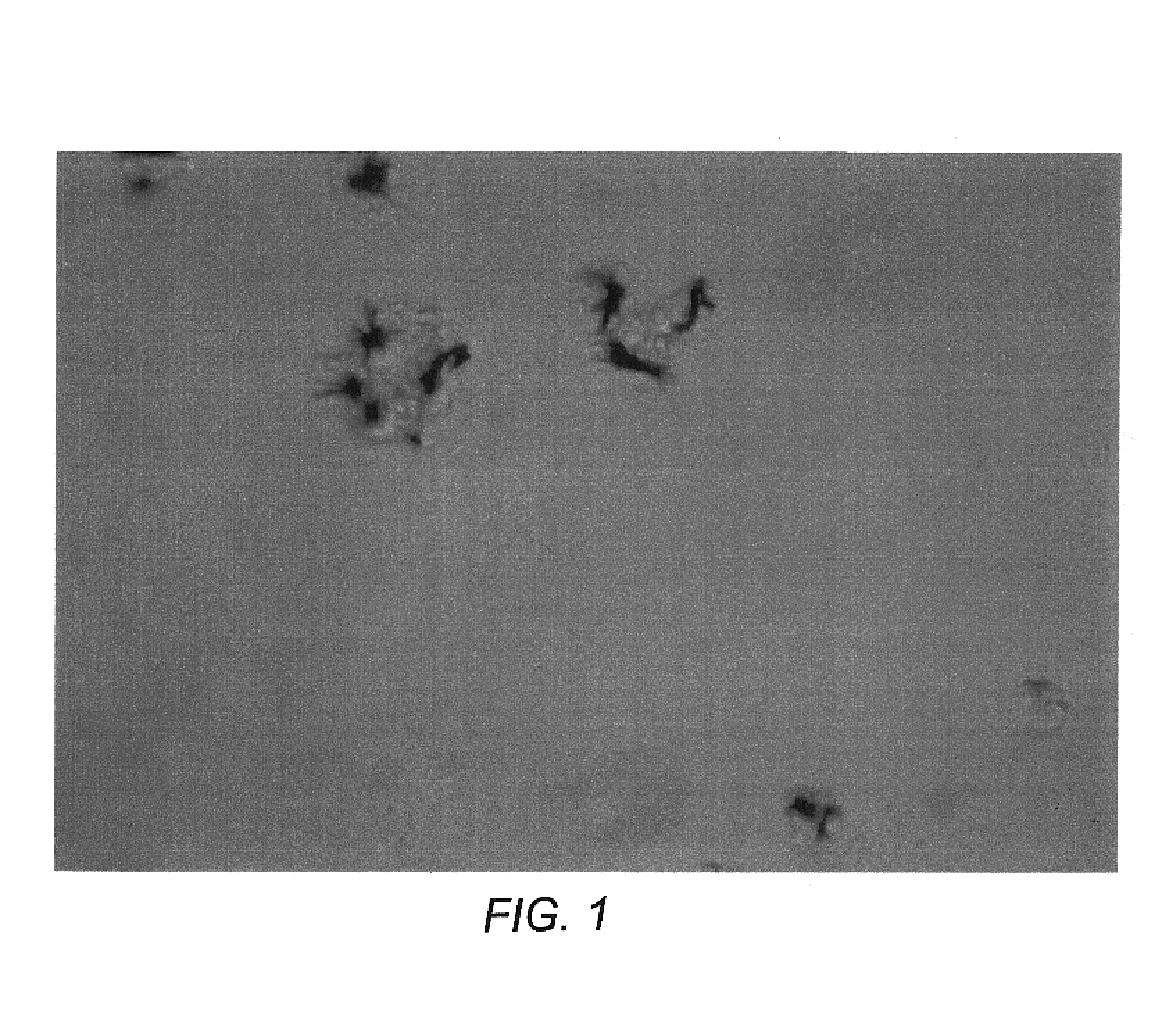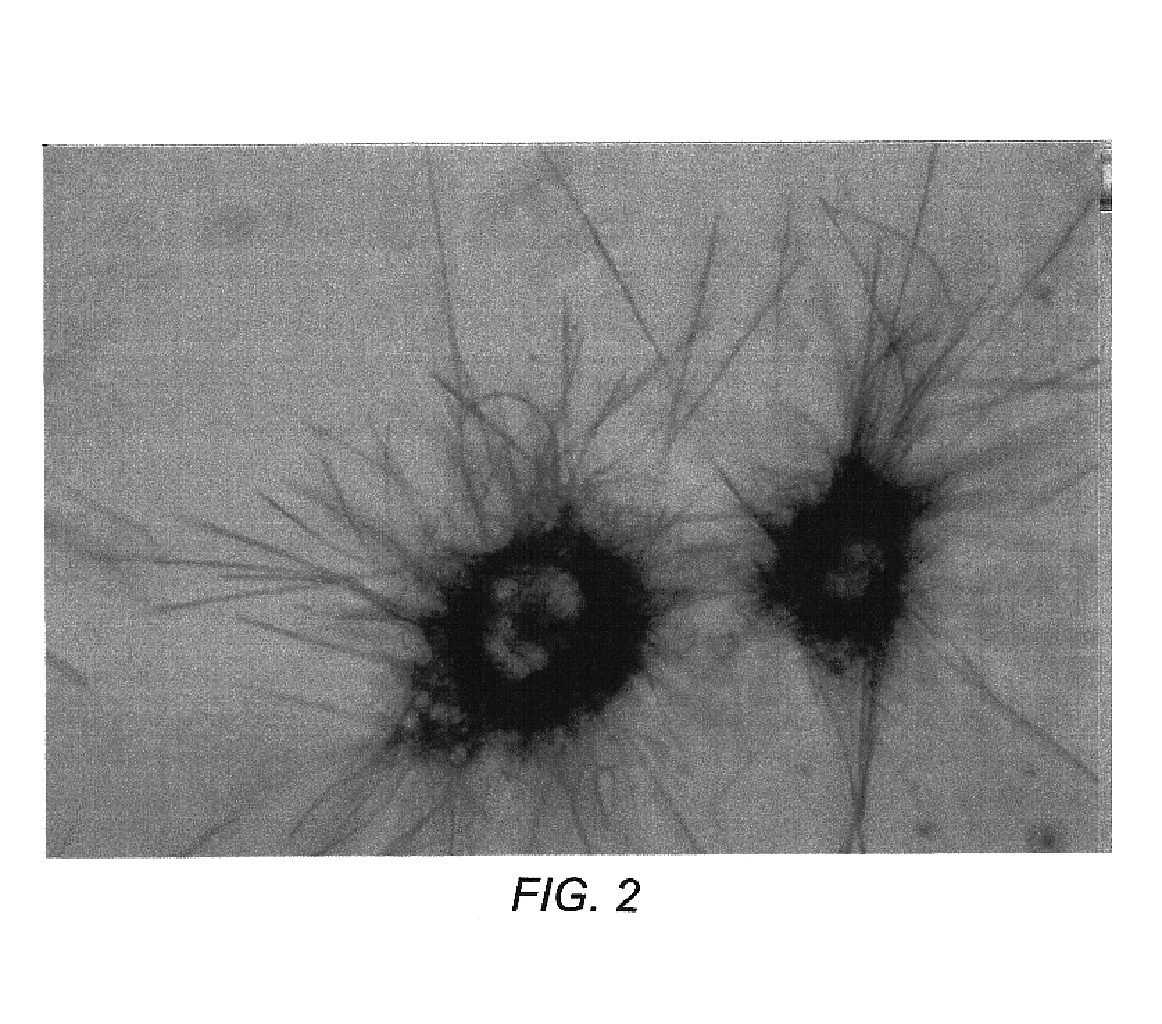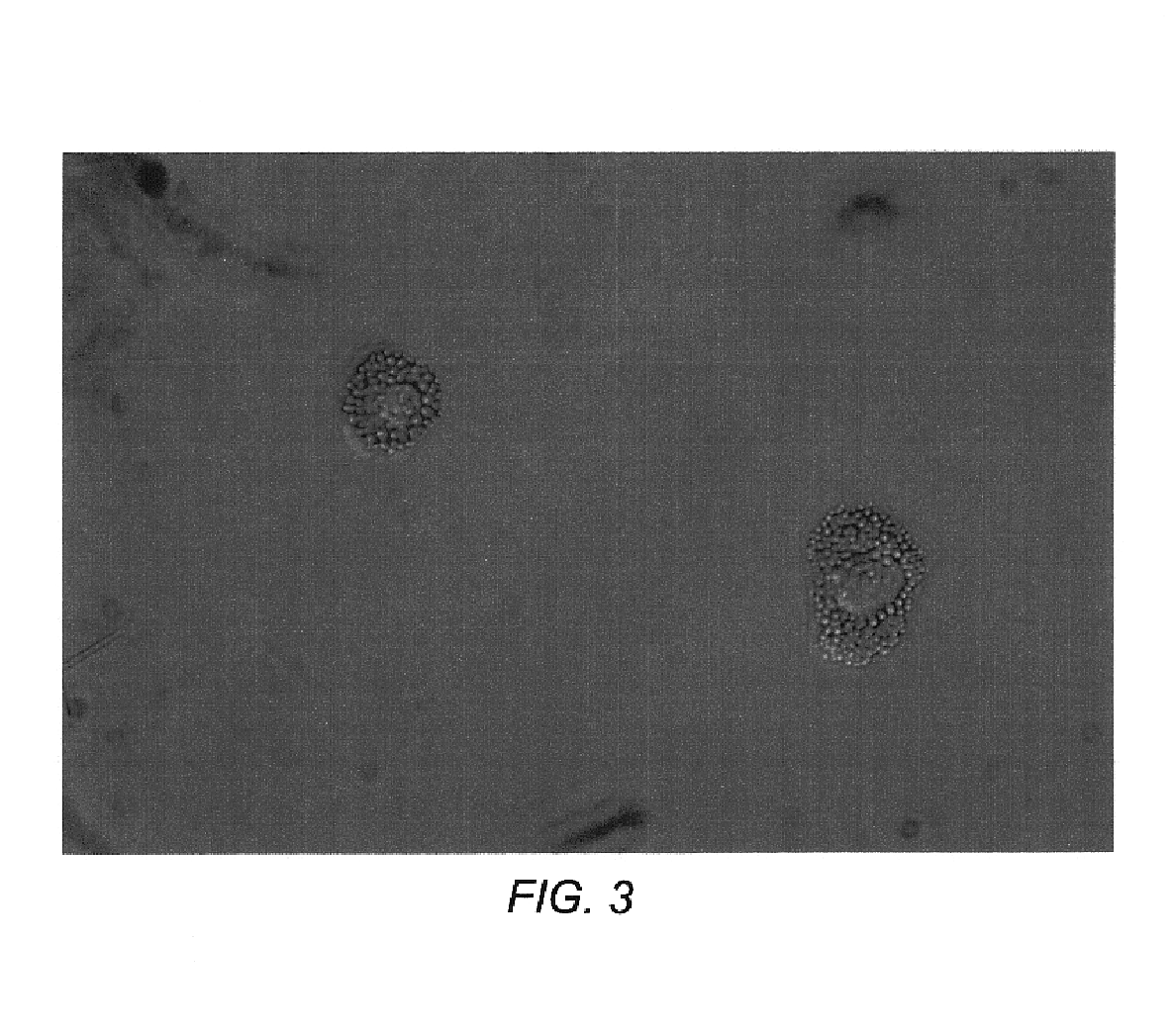Methods and compositions for the visualization of cellular organelles using tetrazolium salts
- Summary
- Abstract
- Description
- Claims
- Application Information
AI Technical Summary
Benefits of technology
Problems solved by technology
Method used
Image
Examples
example 1
Preparation of Cells from Fresh Tissues for Cellular Organelle Visualzation
[0054]Cells suspensions were removed from surgical resection specimens of intracranially or subcutaneously established gliosarcomas in rats by removing samples (0.5-1.0 cm square) of tissue and then mincing the samples with a razor blade in PBS at room temperature. Minced tissue was then washed in PBS and resuspended in 2 ml aliquot of PBS containing 2.0 U / ml of collagenase and 0.2 U / ml DNase, and then incubated for 2 hours at room temperature. During the incubation, the samples were rotated end over end. Following collagenase and DNase digestion, the samples were strained on a 100 micrometer nylon filter (Nytex, Small Parts, Inc., Miami Lakes, Fla.), pelleted, washed in PBS, by sequential centrifugation at 325 G. Then they were transferred into a flask for culture as described in Examples 3-6 (below). Cells can also be obtained from fresh tissue, peripheral blood, bone marrow, and lymph nodes and treated in ...
example 2
Visualization of Centrosomes of SHP77 (SCLC) Cells following Treatment with TV
[0055]9L gliosarcoma tumor cells (4000) obtained by the method described in example 1 were seeded in 48 well plate one day before being exposed to tetrazolium violet (TV, a substrate of SDH) at the concentration of 50 μg / ml. The Modified DMEM media was used in this example. As shown in FIG. 1, centrosomes, usually one in each cell (J, #1-6), were crystallized at the poles, with the cell viability being significantly reduced (see data in Example 1).
[0056]After being treated under the same condition, the centrosome of CNS1 tumor cells were all crystallized (not shown).
example 3
Visualization of Microtubules of 9L Gliosarcoma Cancer Cells following Treatment with MTT
[0057]9L cancer cells were exposed to MTT (50 ug / ml) at the same condition as described in Example 2. The tumor cells (4000) were seeded one day before being treated with MTT. As can be seen in FIG. 2, the microtubules and nuclear envelopes were frozen by the crystals formed on them.
PUM
 Login to View More
Login to View More Abstract
Description
Claims
Application Information
 Login to View More
Login to View More - R&D
- Intellectual Property
- Life Sciences
- Materials
- Tech Scout
- Unparalleled Data Quality
- Higher Quality Content
- 60% Fewer Hallucinations
Browse by: Latest US Patents, China's latest patents, Technical Efficacy Thesaurus, Application Domain, Technology Topic, Popular Technical Reports.
© 2025 PatSnap. All rights reserved.Legal|Privacy policy|Modern Slavery Act Transparency Statement|Sitemap|About US| Contact US: help@patsnap.com



